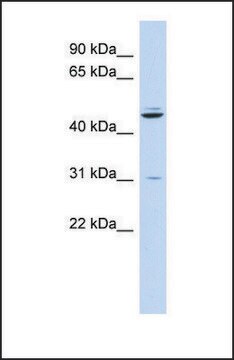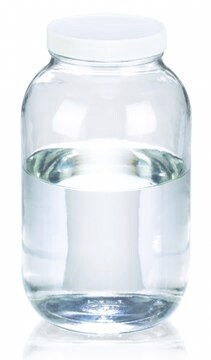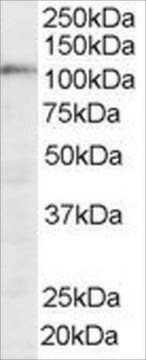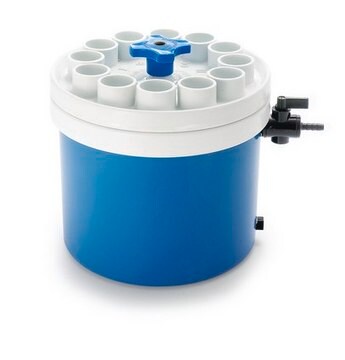ABC1431
Anti-HAF/SART1 Antibody
serum, from rabbit
Sinônimo(s):
U4/U6.U5 tri-snRNP-associated protein 1, Allergen Hom s 1, HAF, hSART-1, hSnu66, SART-1, Hypoxia-associated factor, SNU66 homolog, Squamous cell carcinoma antigen recognized by T-cells 1, U4/U6.U5 tri-snRNP-associated 110 kDa protein
About This Item
IP
WB
immunoprecipitation (IP): suitable
western blot: suitable
Produtos recomendados
fonte biológica
rabbit
Nível de qualidade
forma do anticorpo
serum
tipo de produto de anticorpo
primary antibodies
clone
polyclonal
reatividade de espécies
human, mouse
técnica(s)
ChIP: suitable
immunoprecipitation (IP): suitable
western blot: suitable
nº de adesão NCBI
nº de adesão UniProt
Condições de expedição
ambient
modificação pós-traducional do alvo
unmodified
Informações sobre genes
human ... SART1(9092)
Descrição geral
Especificidade
Imunogênio
Aplicação
Immunoprecipitation Analysis: A representative lot immunoprecipitated HAF from human renal carcinoma ACHN cell lysate (Koh, M.Y. et al. (2015). Cancer Res. 75(2):316-329).
Western Blotting Analysis: Representative lots detected both endogenous and exogenously expressed HAF in various transfected human cancer cells, while a downregulated HAF was detected in cells co-transfected with HAF siRNA (Koh, M.Y. et al. (2015). Cancer Res. 75(2):316-329; Koh, M.Y. et al. (2011). Cancer Res. 71(11):4015-4027; Koh, M.Y., et al. (2008). Mol. Cell. Biol. 28(23):7081-7095).
Western Blotting Analysis: A representative lot detected HAP in HIF-1 immunoprecipitate from A549, HCT-116, and HT-29 xenografts (Koh, M.Y., et al. (2008). Mol. Cell. Biol. 28(23):7081-7095).
Apoptosis & Cancer
Qualidade
Western Blotting Analysis: A 1:2,000 dilution of this antiserum detected HAF/SART1 in 10 µg of U2OS nuclear extract.
Descrição-alvo
forma física
Armazenamento e estabilidade
Handling Recommendations: Upon receipt and prior to removing the cap, centrifuge the vial and gently mix the solution. Aliquot into microcentrifuge tubes and store at -20°C. Avoid repeated freeze/thaw cycles, which may damage IgG and affect product performance.
Outras notas
Exoneração de responsabilidade
Não está encontrando o produto certo?
Experimente o nosso Ferramenta de seleção de produtos.
Código de classe de armazenamento
12 - Non Combustible Liquids
Classe de risco de água (WGK)
WGK 1
Certificados de análise (COA)
Busque Certificados de análise (COA) digitando o Número do Lote do produto. Os números de lote e remessa podem ser encontrados no rótulo de um produto após a palavra “Lot” ou “Batch”.
Já possui este produto?
Encontre a documentação dos produtos que você adquiriu recentemente na biblioteca de documentos.
Nossa equipe de cientistas tem experiência em todas as áreas de pesquisa, incluindo Life Sciences, ciência de materiais, síntese química, cromatografia, química analítica e muitas outras.
Entre em contato com a assistência técnica







